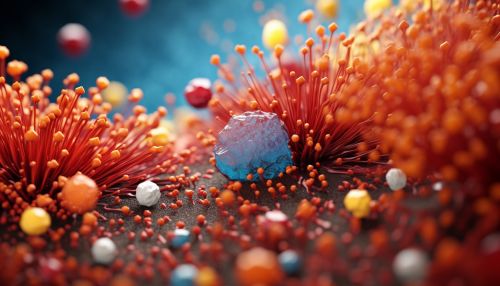Advances in Biocompatible Nanomaterials for Medical Applications
Introduction
Biocompatible nanomaterials are a rapidly growing field within nanotechnology and biomedical engineering. These materials are designed to interact with biological systems with minimal adverse effects. They have a wide range of applications in the medical field, including drug delivery, imaging, and tissue engineering. This article will delve into the recent advances in this field, exploring the development, properties, and applications of these innovative materials.
Biocompatibility and Nanomaterials
Biocompatibility refers to the ability of a material to perform with an appropriate host response in a specific application. In the context of nanomaterials, this means that the materials should not induce an inflammatory or toxic response when introduced into the body. Nanomaterials are materials that have at least one dimension in the nanometer scale (1-100 nm). These materials have unique properties that can be exploited for medical applications, such as high surface area to volume ratio, quantum effects, and the ability to interact with biological systems at the molecular level.
Types of Biocompatible Nanomaterials
There are several types of nanomaterials that have been found to be biocompatible and have potential for use in medical applications. These include:
Polymeric Nanoparticles
Polymeric nanoparticles are made from polymers that are biocompatible and biodegradable. They have been widely used for drug delivery due to their ability to encapsulate a wide range of drugs and deliver them in a controlled manner.
Liposomes
Liposomes are spherical vesicles composed of one or more phospholipid bilayers. They have been used for drug delivery, particularly for the delivery of anticancer drugs.
Dendrimers
Dendrimers are highly branched, star-shaped macromolecules with nanometer-scale dimensions. They have been used for drug delivery, gene delivery, and imaging.
Metal and Metal Oxide Nanoparticles
Metal and metal oxide nanoparticles, such as gold nanoparticles and iron oxide nanoparticles, have been used for imaging, drug delivery, and as contrast agents in magnetic resonance imaging (MRI).


Applications of Biocompatible Nanomaterials in Medicine
Biocompatible nanomaterials have found a wide range of applications in the medical field. Some of the most significant applications include:
Drug Delivery
Biocompatible nanomaterials have been extensively used for drug delivery. They can be designed to carry a wide range of drugs, including small molecule drugs, proteins, and nucleic acids. The use of nanomaterials for drug delivery can improve the therapeutic efficacy of drugs and reduce their side effects.
Imaging
Biocompatible nanomaterials can also be used for imaging. For example, gold nanoparticles and iron oxide nanoparticles can be used as contrast agents in medical imaging techniques such as computed tomography (CT) and magnetic resonance imaging (MRI).
Tissue Engineering
In tissue engineering, biocompatible nanomaterials can be used to create scaffolds that mimic the natural extracellular matrix of tissues. This can help to promote cell growth and tissue regeneration.
Theranostics
Theranostics is a field that combines therapy and diagnostics. Biocompatible nanomaterials can be used for theranostics by combining drug delivery and imaging capabilities in a single system.
Future Perspectives
The field of biocompatible nanomaterials for medical applications is still in its infancy, with many challenges to overcome. However, the potential of these materials is enormous. With further research and development, biocompatible nanomaterials could revolutionize the field of medicine, leading to more effective treatments and improved patient outcomes.
